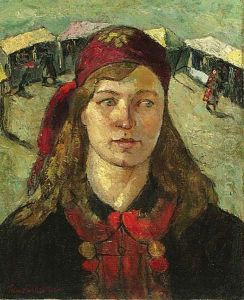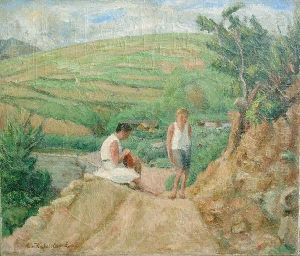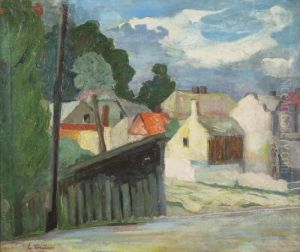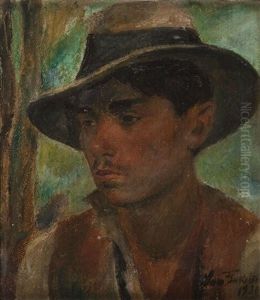Samuel Finkelstein Paintings
Samuel Finkelstein was a Polish-Jewish painter, born in 1895 in Sambor, Galicia, which was then part of the Austro-Hungarian Empire and is now located in Ukraine. He developed his artistic talent at a young age and pursued his passion for art throughout his life. Finkelstein studied at the Academy of Fine Arts in Kraków, a prestigious institution that has nurtured many prominent Polish artists.
During the interwar period, Finkelstein was an active participant in the Jewish artistic circles and the wider avant-garde movement in Poland. He was closely associated with the 'Jung Idysz' (Young Yiddish) group, a collective of artists and writers focused on modernist interpretations of Jewish culture and identity. His work during this time often reflected the themes of Jewish life and folklore, combining elements of Expressionism and Cubism with traditional Jewish motifs.
Finkelstein's career was dramatically affected by the outbreak of World War II and the Holocaust. As a Jew in Nazi-occupied Poland, he was subjected to persecution and eventually confined to the Kraków Ghetto. Despite the oppressive conditions, he continued to create art, often documenting the harsh realities of ghetto life. His experiences during the war deeply influenced his post-war artistic output, which frequently dealt with themes of suffering and survival.
After the war, Finkelstein remained in Poland and continued to paint, but the trauma of the Holocaust left a permanent mark on his work. His post-war paintings often exhibit a more somber tone, with a focus on remembrance and the human condition. He exhibited his work in several shows throughout the 1950s, gaining recognition for his contribution to Polish and Jewish art.
Samuel Finkelstein passed away in 1961 in Kraków, Poland. Despite the tragedies that overshadowed his life, his artistic legacy endures as a poignant record of Jewish life and culture in 20th-century Poland. His paintings are held in various collections and continue to be studied and appreciated for their historical significance and artistic merit.


![Pejzaz Gorski [pejzaz Lesny]](https://www.niceartgallery.com/imgs/581435/s/samuel-finkelstein-pejzaz-gorski-pejzaz-lesny-c4edf712.jpg)

